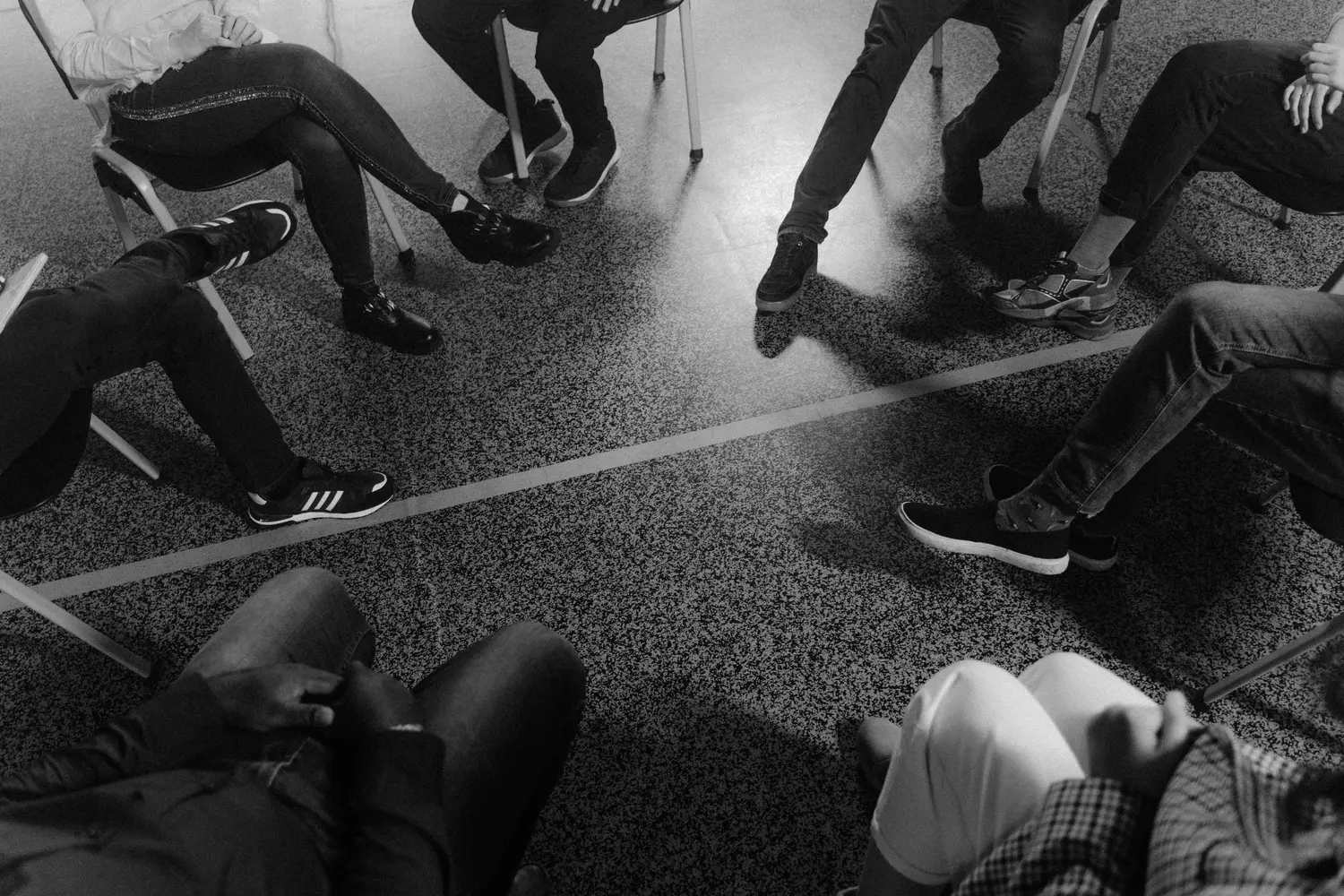
The AA Prayer: What Is It And How Does It Help Recovery?
Key Points
- The AA prayer is one of the guiding principles of the 12-step AA program and is typically recited at AA meetings.
- The AA prayer reflects Christian tenets, but it can be used by members of other religions or in secular recovery groups.
- There are many other AA prayers besides the Serenity prayer, including one for each step of the AA program.
The most popular AA prayer is the Serenity Prayer. This is what most people are referring to when they talk about the Alcoholics Anonymous prayer. A shortened version of the Serenity Prayer is typically recited at the beginning and end of each AA meeting.
Where Did the AA Prayer Come From?
The most well-known version of the AA prayer is a simple prayer composed of just a few lines. Its simplicity allows it to be easily memorized, so it can be referenced whenever it’s needed.
The Words of the AA Prayer
The shortened AA prayer consists of the following words:
God, grant me the serenity to accept the things I cannot change,
The courage to change the things I can,
and the wisdom to know the difference.
The Origin of the Prayer
According to the General Service Office of the organization known as Alcoholics Anonymous, the Serenity Prayer (also known as the AA prayer) originally came from an obituary published in the New York Herald Tribune in 1941. [1]
After seeing a clipping of the obituary, AA secretary Ruth Hock Recelius was so moved by the prayer, she began using it in AA documents and letters. It eventually caught on with other prominent members of the organization, and the rest is AA history.
What Does the AA Prayer Mean?
No one knows who first penned the AA prayer, or the Serenity Prayer, but many people think it was authored by St. Francis of Assisi. A quick read of the full version of this prayer makes it apparent that it is deeply religious (as most prayers are):
God grant me the serenity
To accept the things I cannot change;
Courage to change the things I can;
And the wisdom to know the difference.
Living one day at a time;
Enjoying one moment at a time;
Accepting hardships as the pathway to peace;
Taking, as He did, this sinful world
As it is, not as I would have it;
Trusting that He will make things right
If I surrender to His Will;
So that I may be reasonably happy in this life
And supremely happy with Him
Forever and ever in the next.
The Religious Meaning of the AA Prayer
Alcoholics Anonymous is a faith-based organization, but not all of its members are religious. The 12-step program, which AA is founded upon, has been proven to be a highly effective system for recovering alcoholics, so its use has become widespread among believers and non-believers alike. [2]
Those with a belief in a higher power may believe that the prayer is an appeal to God to, quite literally, give them strength to overcome alcoholism. For non-believers, the meaning may be a bit more abstract.
The Secular Meaning of the AA Prayer
Non-religious AA members may not view the prayer as a direct request to a higher power, but as a type of surrender. The prayer is an acknowledgement that alcoholics are powerless over the control alcohol has over their lives. It’s also a reminder that we face people and situations in daily life that we have no control over, but there are better ways to cope than substance use.
While religious members may use the AA prayer as part of spiritual development, non-religious users also benefit in terms of overall well-being. A 2022 study revealed that AA involvement was linked to existential and subjective well-being. [3] The prayer does contain some sentiments that point to fundamental mental health practices like gratitude and mindfulness.
Some non-religious AA members may also see the prayer as a message to the universe or their own consciousness. The prayer can be highly personal, and it might mean something slightly different to everyone who utters it.
When to Use the AA Prayer
One of the benefits of the AA prayer is that it can be memorized and recited easily. Thus, an alcoholic can say the prayer out loud or to themselves anytime they feel they need strength. Aside from its use as an addiction treatment method, the prayer can also be a grounding technique like those often recommended by mental health professionals.
Grounding techniques can be helpful in times of heightened stress or anxiety, which are common among those in recovery. They can calm the central nervous system and help individuals accept the moment they’re in, without the need to change it or control it.
Different people may use the AA prayer at different times. For example, a morning prayer can be a good way to start the day with the intention of avoiding alcohol or other substances. It can also be used in moments of temptation to remind the individual of their commitment to sobriety.
Other AA Prayers
The Serenity Prayer may be the most widely known AA prayer, but it’s not the only one listed in the Big Book (considered the basic text of the AA program). There are many different prayers, including prayers associated with each step of AA’s 12-step program. The following AA prayers are inspired by prayers and ideas in The Big Book, AA Daily Reflections, and other official resources.[4]
First Step Prayer
GOD, Creative Intelligence, Universal Mind, Spirit of Nature or Spirit of the Universe my name is ______ , and I’m a real alcoholic… I need your help today. AMEN
Third Step Prayer
GOD, I offer myself to Thee — to build with me and to do with me as Thou wilt. Relieve me of the bondage of self, that I may better do Thy will. Take away my difficulties, that victory over them may bear witness to those I would help of Thy Power, Thy Love, and Thy Way of life. May I do Thy will always! AMEN, GOD, Take my will and my life. Guide me in my recovery. Show me how to live. AMEN
Fifth Step Prayer
GOD, I thank you from the bottom of my heart that I know you better. Help me become aware of anything I have omitted discussing with another person. Help me to do what is necessary to walk a free man at last. AMEN
Seventh Step Prayer
I humbly offered myself to God, as I then understood Him, to do with me as He would. I placed myself unreservedly under His care and direction. I admitted for the first time that of myself I was nothing; that without Him I was lost. I ruthlessly faced my sins and became willing to have my newfound Friend take them away, root and branch.
MY CREATOR, I am now willing that you should have all of me, good & bad. I pray that you now remove from me every single defect of character which stands in the way of my usefulness to you & my fellows. Grant me strength, as I go out from here to do Your bidding. AMEN
Eleventh Step Prayer
As we go through the day, we pause, when agitated or doubtful, and ask for the right thought or action. We constantly remind ourselves we are no longer running the show, humbly saying to ourselves many times each day, “Thy will be done.”
The AA Prayer Is Just One Part of Treatment
The Serenity Prayer, or AA prayer, has been used for decades, and many people find it to be an important part of their recovery and personal growth. Still, it’s important to point out that the prayer, as well as the AA program, reflect just one part of the recovery process. It may be necessary to meet with a rehabilitation counselor to design a personalized treatment plan aligned with your specific needs.
Frequently Asked Questions About the AA Prayer
What are the main ideas of the Serenity Prayer?
The overarching idea behind the Serenity prayer, or the AA prayer, is the acknowledgement that we are not in control of everything that happens to us or around us. It’s also a plea for wisdom and courage, two of the necessary weapons in the battle against addiction.
How often should I say the AA prayer?
Some recovering alcoholics say the prayer multiple times per day, while others may only say it at AA meetings. There is no right or wrong way to use the prayer. Say it whenever you need to or whenever you feel comfortable.
What religion is the AA prayer?
The AA prayer, or Serenity prayer, is most closely associated with Christianity. Still, it can be used by members of any religious group and by non-religious AA members.
Do I have to be an alcoholic to use the Serenity Prayer?
No. Many people find the Serenity Prayer useful, whether for problems with substance misuse, mental health issues, or simply to address daily life challenges.
Sources
[1] Origin of the serenity prayer: A historical paper. Alcoholics Anonymous. (2009a, July 30). https://www.aa.org/sites/default/files/literature/assets/smf-129_en.pdf
[2] Kelly, J. F. (2017, June). Is Alcoholics Anonymous religious, spiritual, neither? findings from 25 years of mechanisms of behavior change research. Addiction (Abingdon, England). https://pmc.ncbi.nlm.nih.gov/articles/PMC5385165/
[3] Wnuk, M. (2022, April 24). The beneficial role of involvement in Alcoholics Anonymous for existential and subjective well-being of alcohol-dependent individuals? the model verification. International journal of environmental research and public health. https://pmc.ncbi.nlm.nih.gov/articles/PMC9104992/#sec7-ijerph-19-05173
[4]Staff. (2021, September 23). Twelve step prayers – spiritual. Alcoholics Anonymous Cleveland. https://www.aacle.org/twelve-step-prayers/

